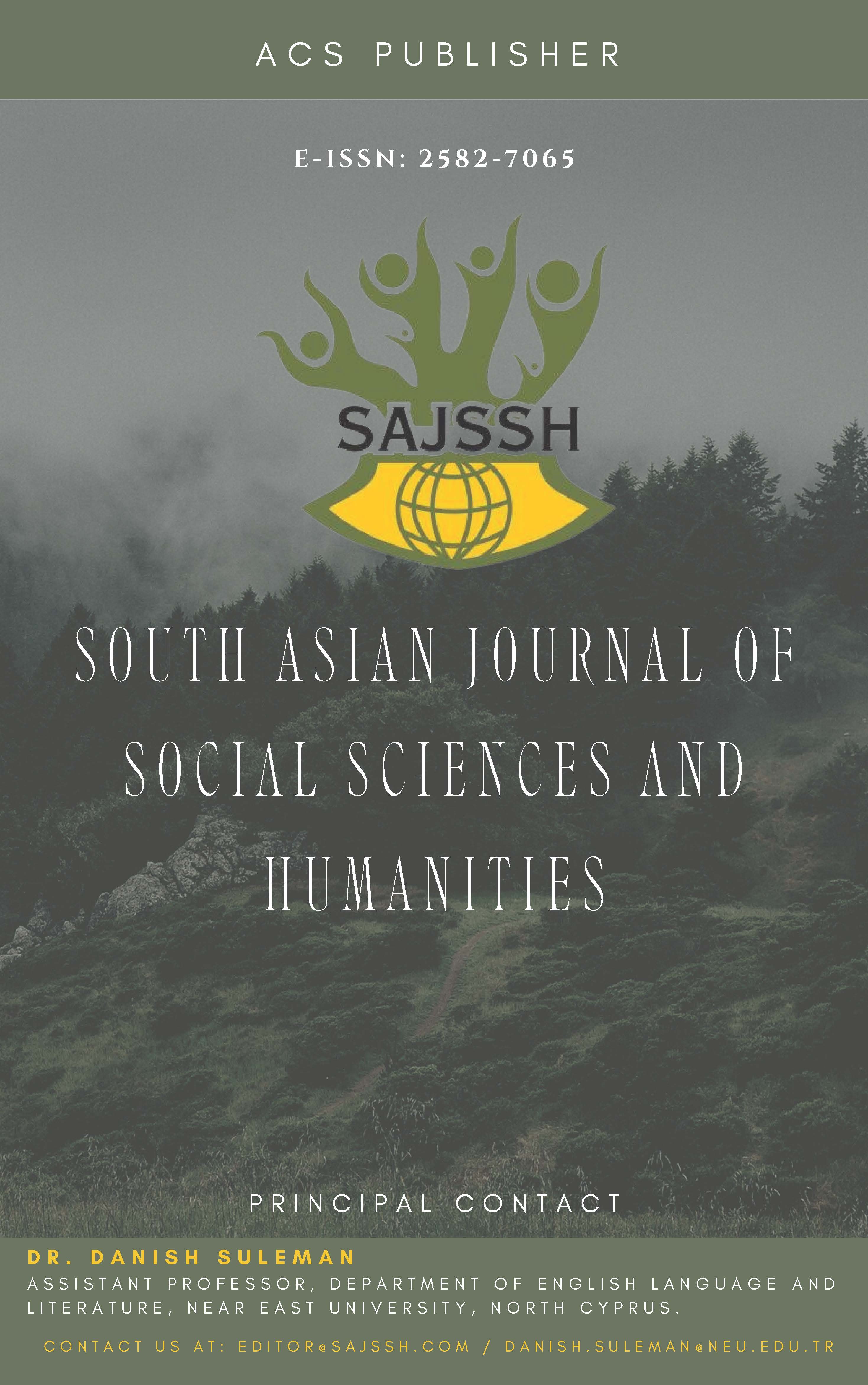Exploring Arab Muslim Representation in the Plays of Wajdi Mouawad, Jose Rivera, Rajiv Joseph, Jessica Blank, and Erika Jensen in American Literature: A Cultural Reflection.
DOI:
https://doi.org/10.48165/sajssh.2024.6209Keywords:
Arab Muslim Representation, Postcolonialism, Orientalism, Trauma Theory, Performance StudiesAbstract
The Western media has produced Arab Muslim identities according to political circumstances leading to simplified generalizations about this community (Said, 1978). Modern United States theatre now provides platforms for complex representations that undermine mainstream perceptions of Arab Muslims. This study analyzes how Arab Muslims are portrayed in modern theatre through a critical evaluation of Scorched. A postcolonial analysis based on Said’s Orientalism (1978) and Bhabha’s theory of hybridity (1994) helps this study explore how these theatre productions counter-simplified portrayals by presenting multifaceted representations of Arab Muslim identity. War experiences displacement and memory function as the main focus points in the analysis when using Trauma theory (Caruth, 1996) and performance studies (Schechner, 2013). The Siege depicts the Palestinian battle against occupation (Abu-Manneh, 2016). The author uses both comic elements and dreamlike qualities in Bengal Tiger at the Baghdad Zoo to portray war's irrationality (Carlson, 2001). Aftermath uses the testimonies of Iraqi refugees to show their human side by enhancing their voice presence (Blank & Jensen, 2010). This research expands the understanding of Arab Muslim portrayal in American theatre while showing theatre as a mechanism to evaluate politics and build cross-cultural understanding (Hughes, 2016).
References
Abu-Manneh, B. (2016). The Palestinian novel: From 1948 to the present. Cambridge University Press. https://doi.org/10.1017/CBO9781316479902
Alsultany, E. (2012). Arabs and Muslims in the media: Race and representation after 9/11. NYU Press. https://doi.org/10.18574/nyu/9780814729175.001.0001
Bhabha, H.K. (1994). The Location of Culture (2nd ed.). Routledge. https://doi.org/10.4324/9780203820551
Blank, J., & Jensen, E. (2010). Aftermath. Dramatists Play Service.
Cainkar, L. (2009). Homeland insecurity: The Arab American and Muslim American experience after 9/11. Russell Sage Foundation.
Carlson, M. (2001). The haunted stage: The theatre as memory machine. University of Michigan Press.
Caruth, C. (1996). Unclaimed experience: Trauma, narrative, and history. Johns Hopkins University Press.
Fischer, S. L. (2005). The politics of memory: Representing trauma in theater. Theatre Journal, 57(4), 591–606. https://doi.org/10.4337/9781800372535.00006
Fischer-Lichte, E. (2008). The Transformative Power of Performance: A New Aesthetics (S. Jain, Trans.; 1st ed.). Routledge. https://doi.org/10.4324/9780203894989
Hesford, Wendy. (2013). Performance in a Time of Terror: Critical Mimesis and the Age of Uncertainty by Jenny Hughes (review). Modern Drama. 56. 562-564. Retrieved from https://www.researchgate.net/publication/265722254
Joseph, R. (2010). Bengal tiger at the Baghdad Zoo. Dramatists Play Service.
Khatib, L. (2013). Storytelling in world cinemas: Forms. Columbia University Press.
Kumar, D. (2012). Islamophobia and the politics of empire. Haymarket Books.
Lowe, D. (2010). The refugee crisis in American theatre. Postcolonial Theatre Studies, 22(1).
Massad, J. (2007). Desiring Arabs. University of Chicago Press.
Mouawad, W. (2009). Scorched (L. Gaboriau, Trans.). Playwrights Canada Press.
Said, E. W. (1978). Orientalism. Vintage Books.
Schechner, R. (2013). Performance studies: An introduction (3rd ed.). Routledge.
Shaheen, J. G. (2001). Reel bad Arabs: How Hollywood vilifies a people. Interlink Publishing Group.
Woodcock, G. (2013). Memory and identity in contemporary Middle Eastern theatre. Routledge.
Downloads
Published
Issue
Section
License
Copyright (c) 2025 South Asian Journal of Social Sciences and Humanities

This work is licensed under a Creative Commons Attribution 4.0 International License.





